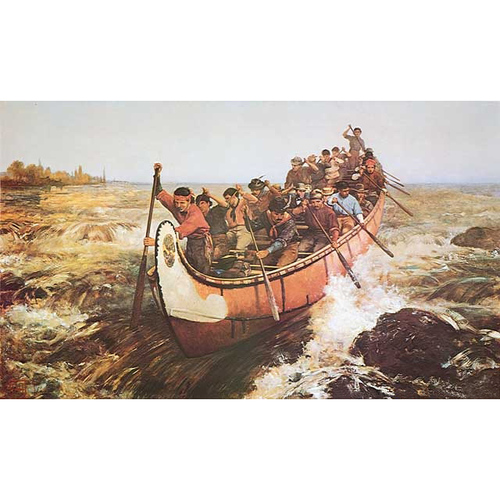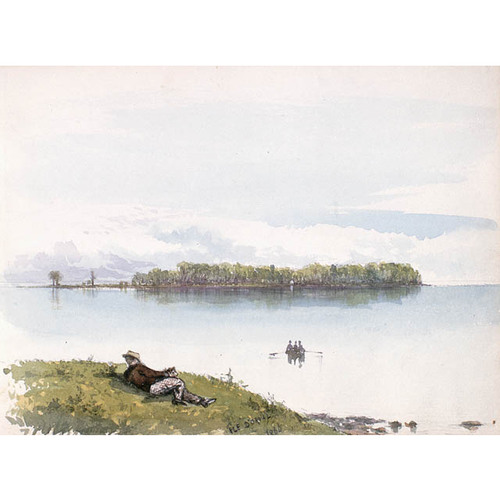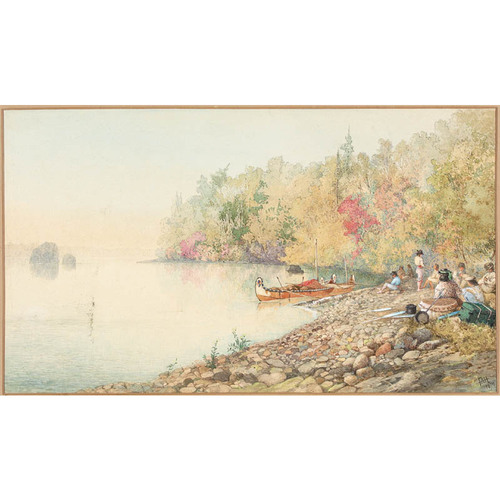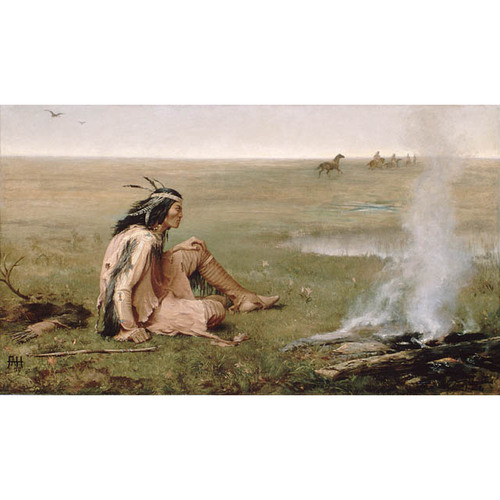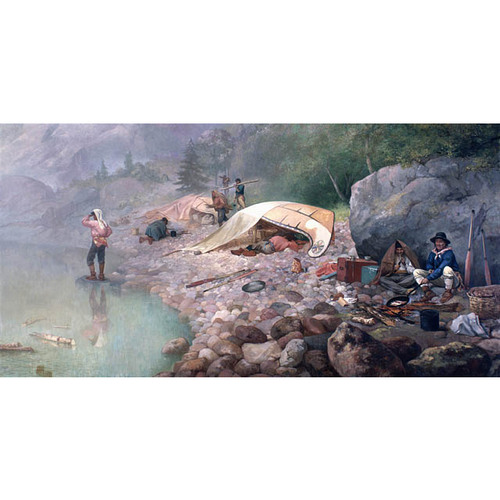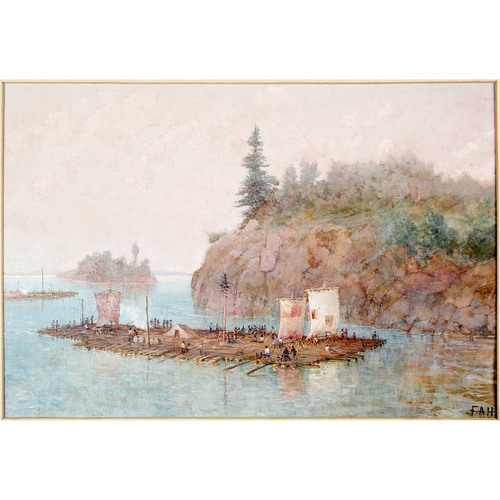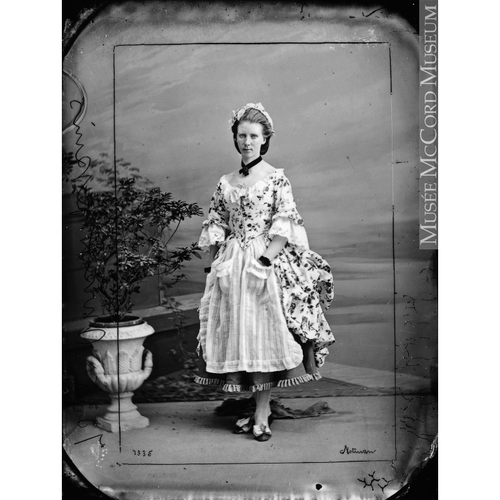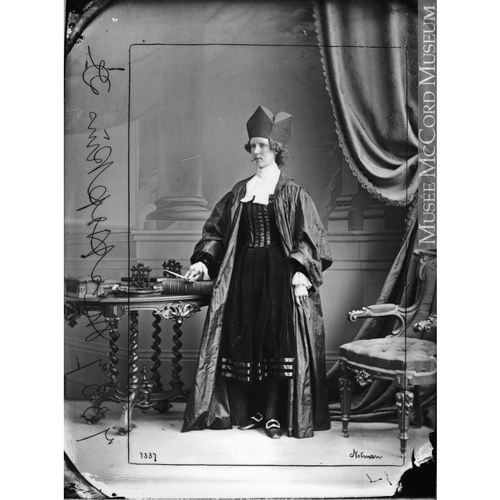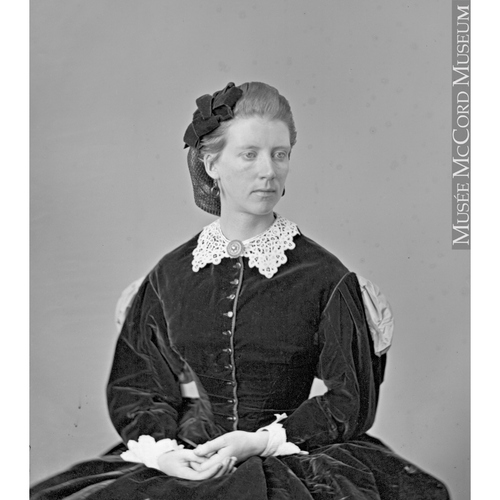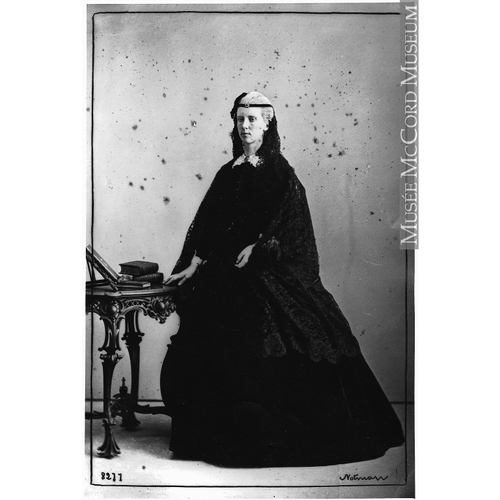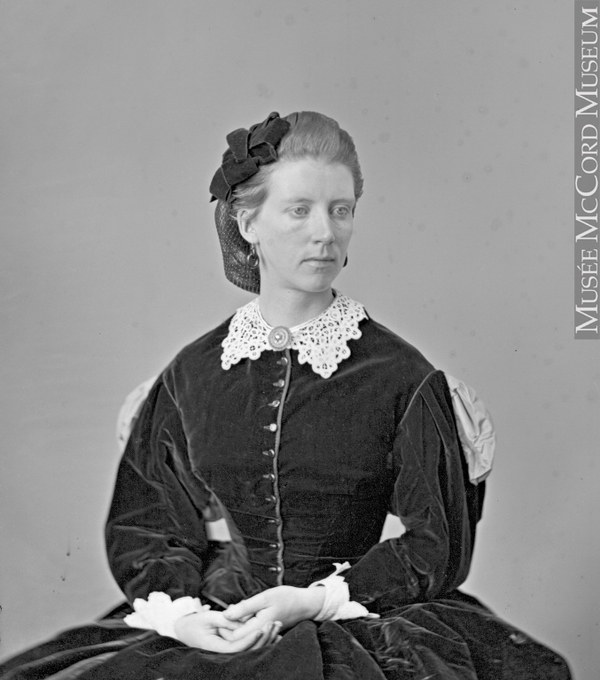
Source: Link
BEECHEY, FRANCES ANNE (Hopkins), painter; b. 2 Feb. 1838 in England, daughter of Frederick William Beechey*, a hydrographer and captain in the Royal Navy, and Charlotte Stapleton; m. 31 Aug. 1858 Edward Martin Hopkins in London, England, and they had five children; d. 5 March 1919 in Hampstead, London.
Frances Anne Beechey’s upper middle class family probably provided her with some education in fine art, possibly including instruction in drawing and painting, although no documentation has been found to confirm this conjecture. The Beechey family included several professional artists, the best known being her grandfather Sir William Beechey, a fashionable portrait painter and member of the Royal Academy of Arts. Lady Beechey was a miniaturist and Frances Anne’s father, who was later promoted rear-admiral, was an accomplished water-colourist, apparently trained in the topographical landscape tradition of British officers. When she married, her artistic connections were strengthened with the acquisition of several more relatives who were painters. One of her husband’s nephews, Gerard Manley Hopkins, would become a noted British poet.
Frances Anne’s husband, Edward Martin Hopkins, a widower with three children, was secretary to Sir George Simpson*, governor of the Hudson’s Bay Company. In 1858 they settled in Hopkins’s house at Lachine, Lower Canada, adjacent to the HBC warehouse and the headquarters of the company’s operations. Frances Anne raised her three stepchildren and would have five children of her own, two of them dying as infants in Canada.
Frances Anne’s earliest known sketches are of scenes about Lachine and Montreal in the years immediately following her arrival in Lower Canada. Simpson died in 1860 and Edward Martin took charge of the company’s Montreal department until his retirement in 1869. The HBC office was moved to Montreal in 1861 and thereafter the family lived in the city, spending some summers at Snowdon, a house in suburban Côte-des-Neiges (Montreal). Her dated sketches and her husband’s business correspondence provide a record of brief trips to Quebec, the Eastern Townships, Ottawa, Toronto, Niagara Falls, and New York. The travels which most influenced her painting were tours with her husband by large fur-trade canoes on the upper Great Lakes and the Mattawa (Ont.) and Ottawa rivers in 1864, 1866, and 1869. Her major canvas of a portage during the expedition to the Red River led by Colonel Garnet Joseph Wolseley in 1870 suggests possibly a fourth visit to the upper lakes.
During her residence in Canada, Frances Anne and her husband holidayed several times in England and France and, with the children, she spent several winters in London. The family returned to England permanently in 1870, and lived first in central London and later at Henley-on-Thames. After Edward’s death in 1893 she worked from her studio-home in Hampstead until her death.
The only Canadian exhibition in which Mrs Hopkins participated during her lifetime was that of the Art Association of Montreal in 1870. She showed frequently in England and appears to have planned her major oils for the annual exhibitions of the Royal Academy of Arts in London, beginning in 1869. A one-person water-colour show in London in 1914 included Canadian subjects and French landscapes, with a few South African scenes. Although her paintings of voyageurs are widely familiar today because of their frequent use for book and periodical illustration, it was not until 1990 that a comprehensive exhibition of her work was mounted.
During the decade which Mrs Hopkins spent in Canada, the HBC was replacing the freight canoe wherever possible by less costly means of transport–steamboat, railway, even horse teams and sleighs. She witnessed trade canoe travel on the Great Lakes in its closing period and made this subject her own. More than any other artist, she recognized and interpreted accurately the demanding skills of canoe handling. In a period of heavily romantic painting, her principal subjects were contemporary working activities. Her landscapes are alive with people and, although the topographical tradition and the picturesque character of the 19th century English watercolour school helped to shape her vision, she surpassed that background to achieve an impressive quality of reportage on canvas and on paper. Meticulous in her drawing and thoroughly capable in her painting, she treated numerous Canadian subjects but her special achievement is the vividly convincing pictorial record of the canoes and paddlers of the nation’s first great transportation system. In these works she rose to a level of colourful realism.
The most important collection of paintings, drawings, and sketches by Frances Anne Beechey (Hopkins) is at the NA, Documentary Art and Photography Div. Works by her are also found in the Art Gallery of Greater Victoria, Art Gallery of Hamilton, Ont., Art Gallery of Northumberland (Cobourg, Ont.), Art Gallery of Ontario (Toronto), Glenbow Museum (Calgary), Minn. Hist. Soc. (St Paul), and Royal Ontario Museum (Toronto), Canadiana Dept. Descendants of the Hopkins family own a number of significant paintings by the artist, depicting Canadian landscapes. Many of her works are reproduced in J. E. Clark and Robert Stacey, Frances Anne Hopkins, 1838–1919; Canadian scenery (Thunder Bay, Ont., 1990), a catalogue published by the Thunder Bay Art Gallery for an exhibition there in 1990. This work also contains a thorough analysis of Beechey’s artistic production. The Notman Photographic Arch. at the McCord Museum of Canadian Hist. in Montreal holds photographs of the artist during her stay in Canada; her only surviving correspondence is also in the McCord Museum, at M21411 (McCord family papers).
PAM, HBCA, B.134/b/21, 29; B.134/c/114. Private arch., Leo Handley-Dery (London), Geneal. St Saviour’s Church (London), RBMB, 31 Aug. 1858. Hampstead and Highgate Express (London), 8, 12 March 1919. Art Assoc. of Montreal, Sixth exhibition, 1870; catalogue of oil and water colour paintings, statuary, bronzes, and other works of art . . . (Montreal, 1870). A. M. Johnson, “Edward and Frances Hopkins of Montreal,” Beaver, outfit 302 (autumn 1971): 4–19.
Cite This Article
Philip Shackleton, “BEECHEY, FRANCES ANNE (Hopkins),” in Dictionary of Canadian Biography, vol. 14, University of Toronto/Université Laval, 2003–, accessed April 25, 2025, https://www.biographi.ca/en/bio/beechey_frances_anne_14E.html.
The citation above shows the format for footnotes and endnotes according to the Chicago manual of style (16th edition). Information to be used in other citation formats:
| Permalink: | https://www.biographi.ca/en/bio/beechey_frances_anne_14E.html |
| Author of Article: | Philip Shackleton |
| Title of Article: | BEECHEY, FRANCES ANNE (Hopkins) |
| Publication Name: | Dictionary of Canadian Biography, vol. 14 |
| Publisher: | University of Toronto/Université Laval |
| Year of revision: | 1998 |
| Access Date: | April 25, 2025 |


